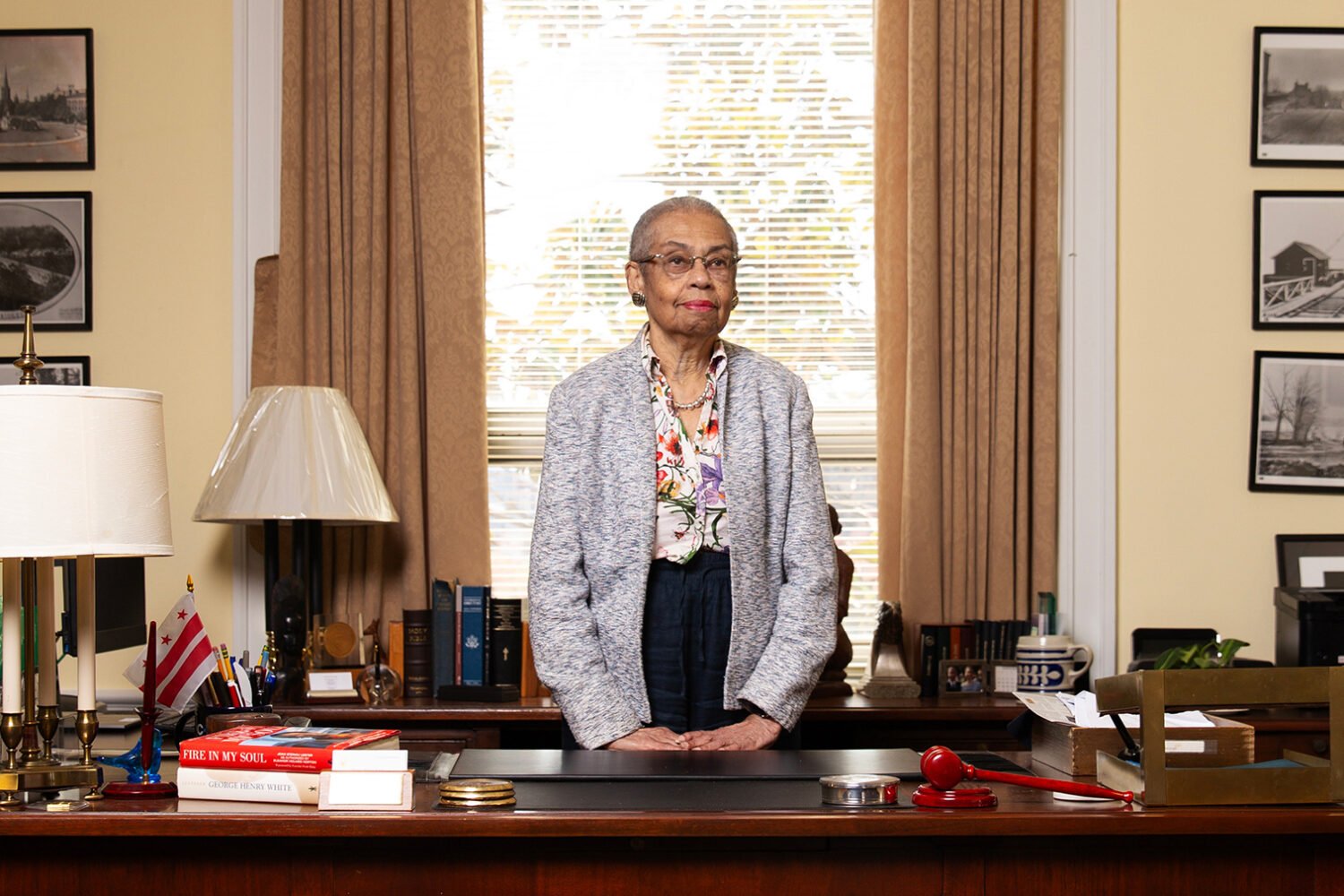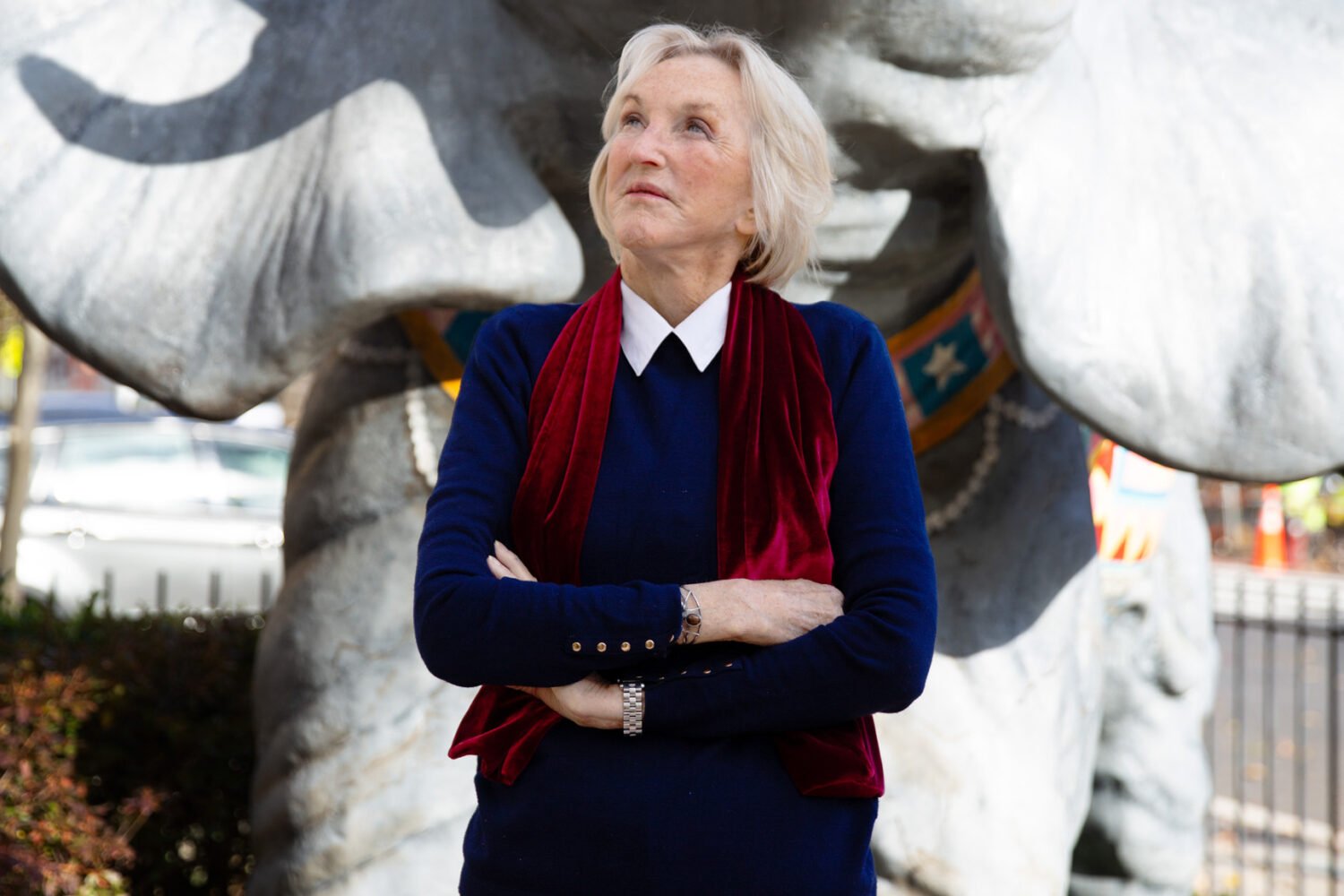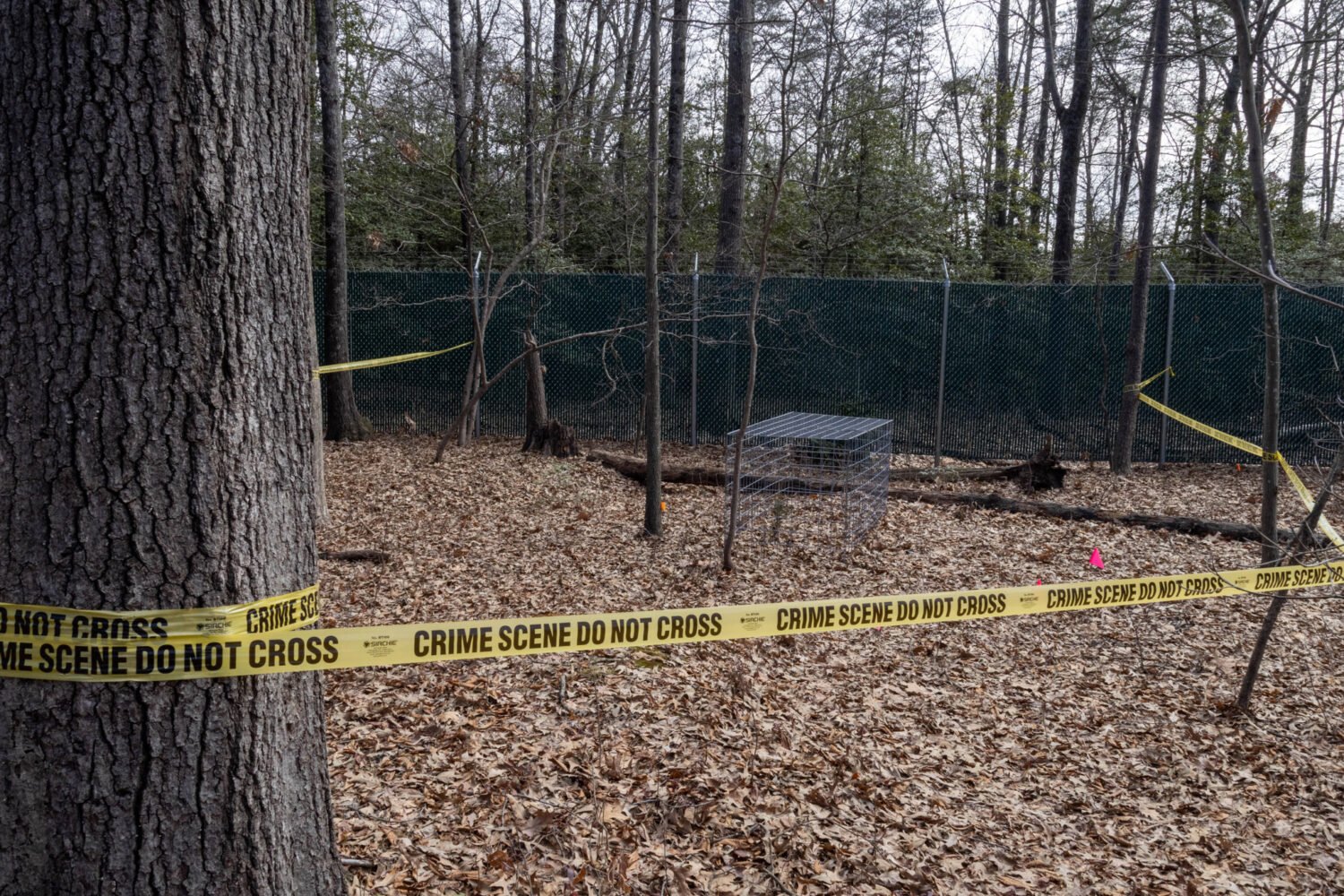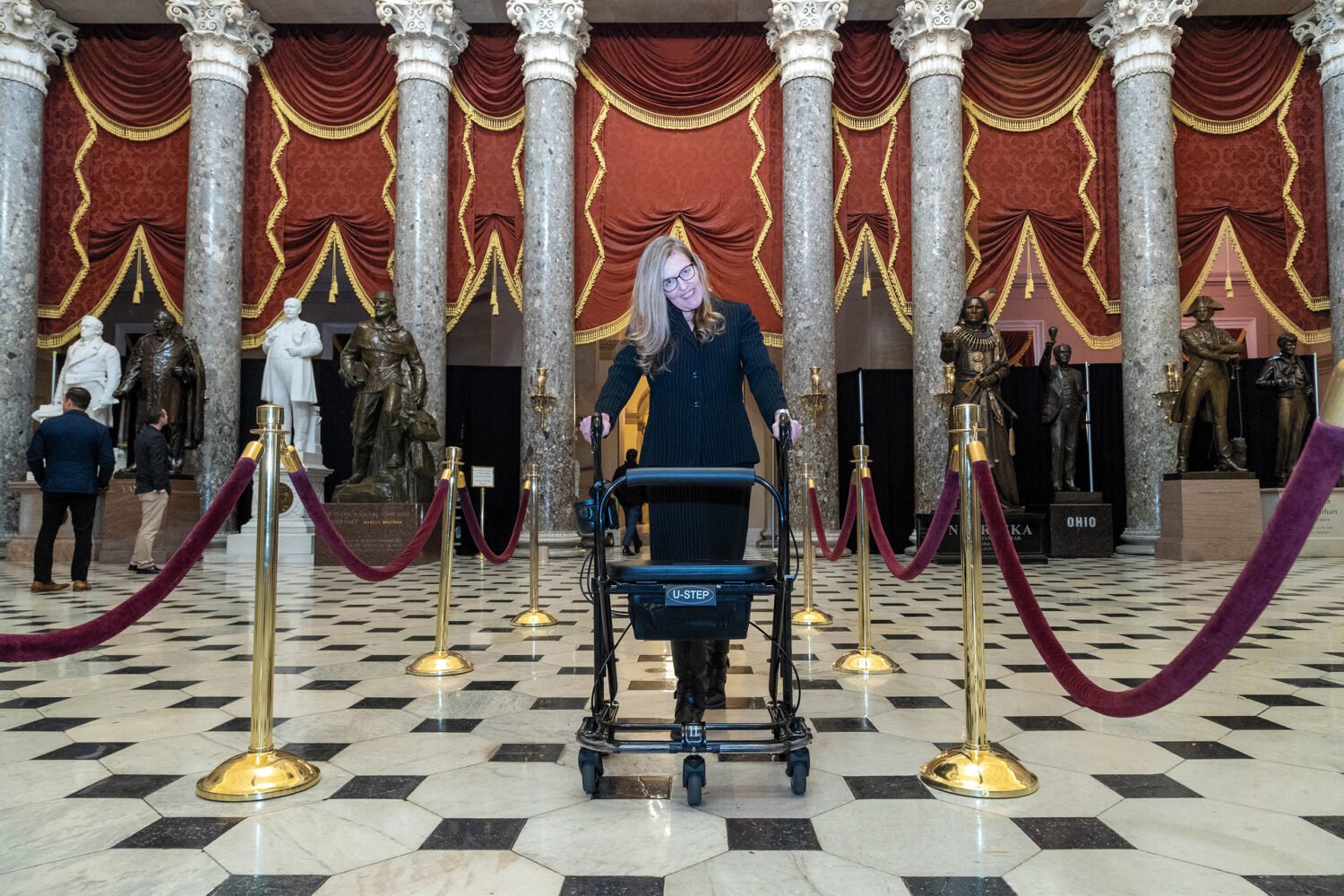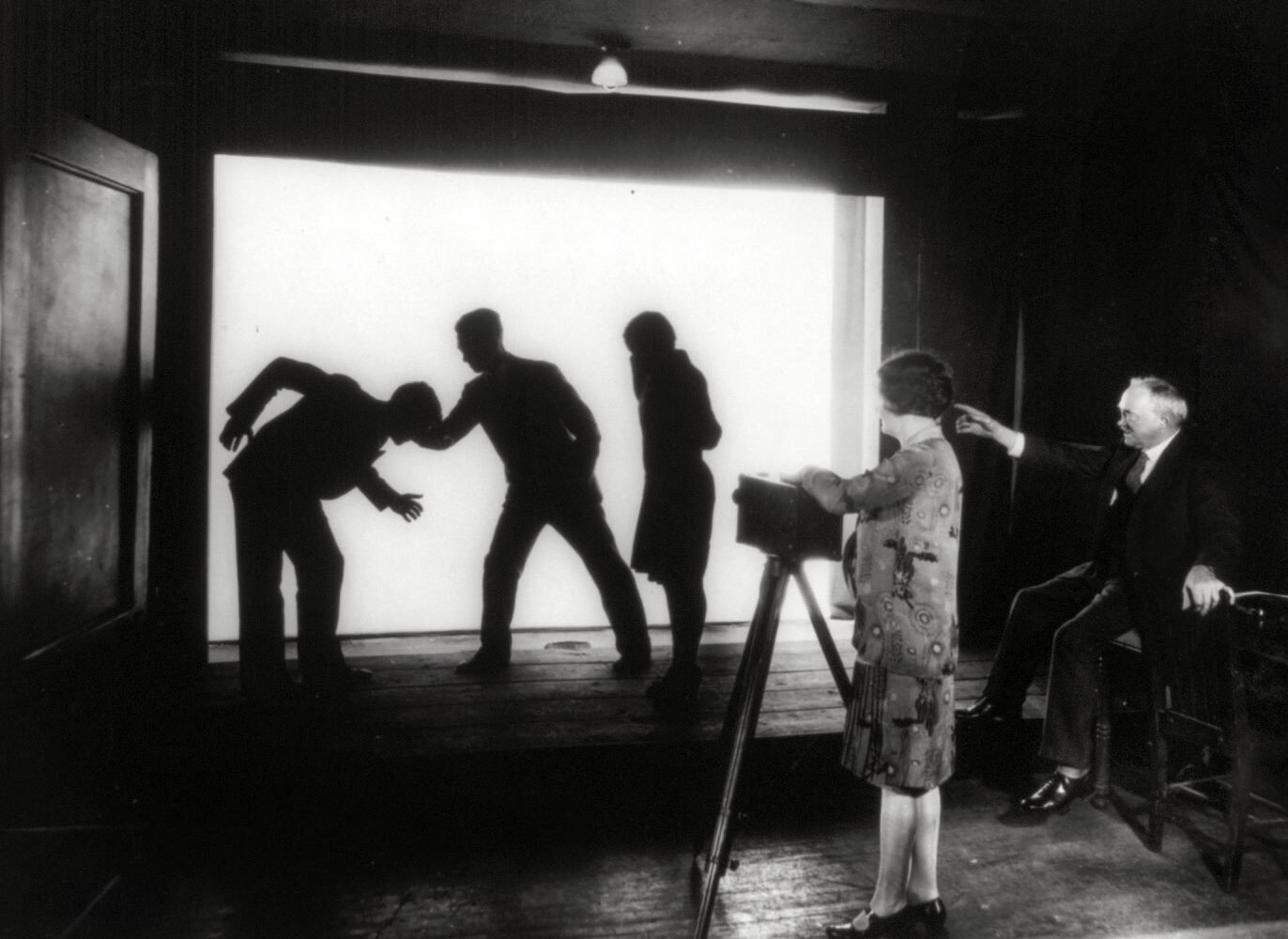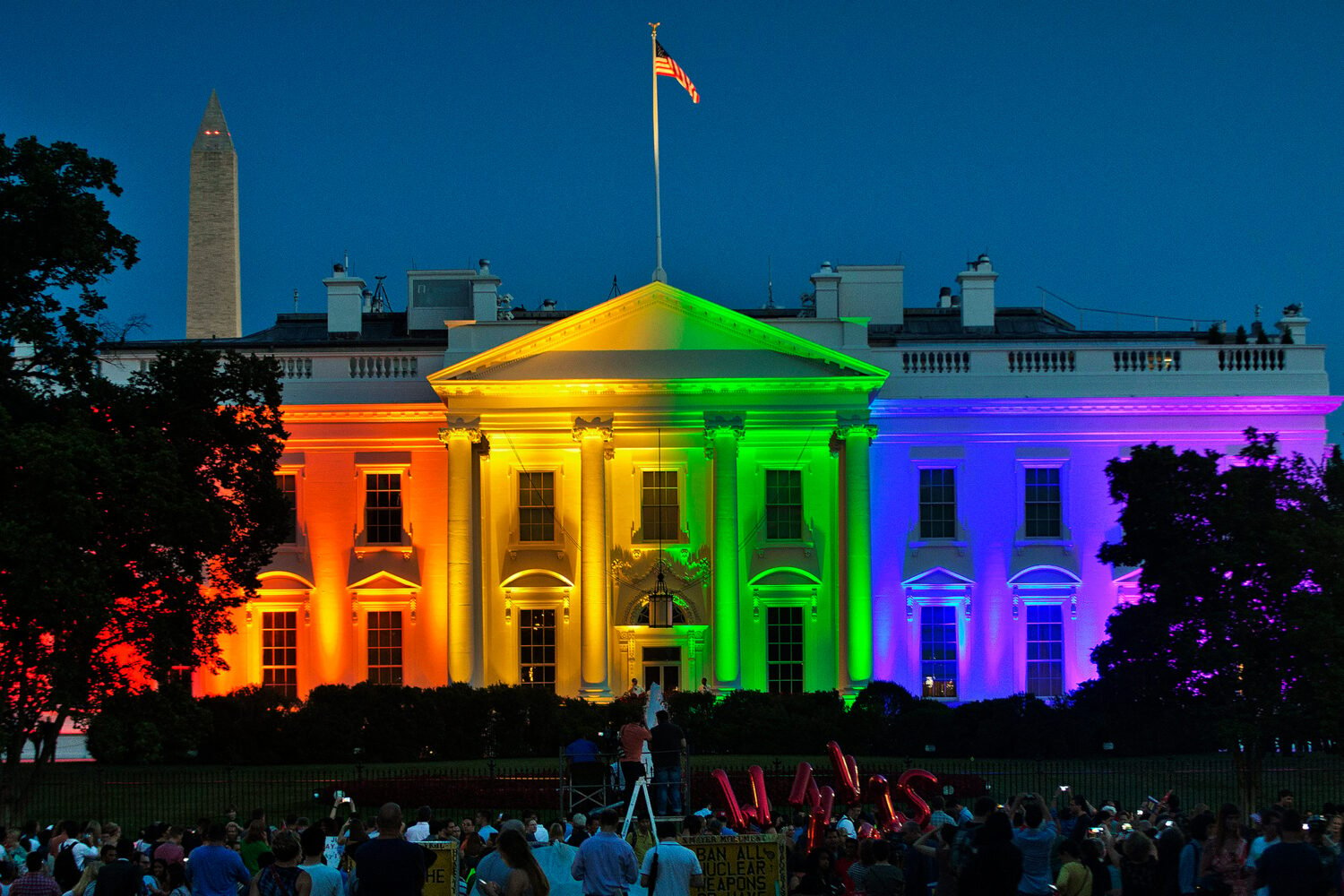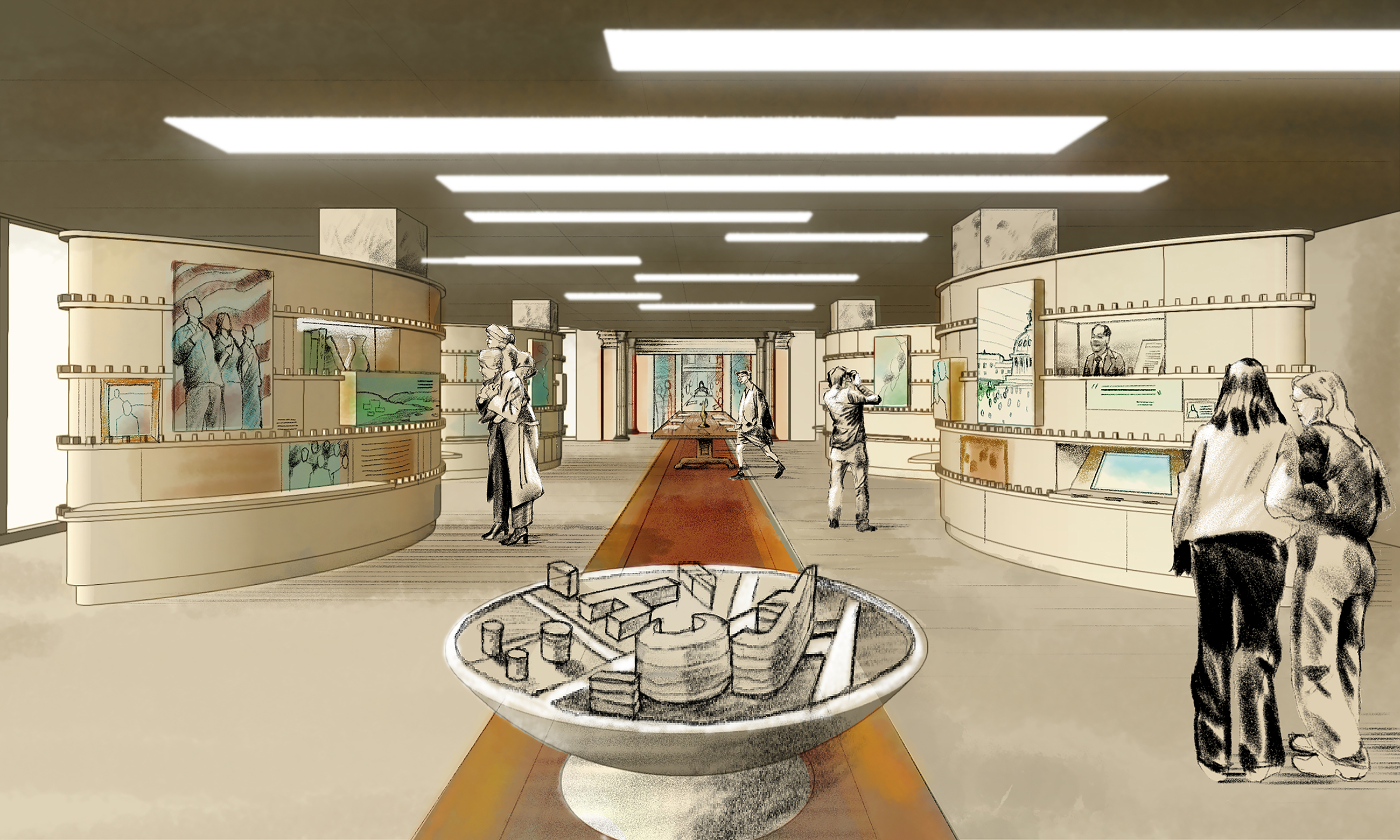On a November day in 2021, Tony Lewis Sr. walked to a phone bank inside the federal correctional institution in Cumberland, Maryland, and placed a call to his son. Over the prior three decades, these conversations had become the highlight of his daily routine, an essential 15-minute escape from the austerity of prison. But on this day, his son’s voice was uncharacteristically somber.
“He denied the motion,” Tony Lewis Jr. said.
Thirty-two years earlier, Lewis Sr.—inmate No. 15443-083—had been convicted on nonviolent charges related to his leadership role in the signature drug empire of 1980s Washington, a notorious criminal enterprise that introduced crack cocaine to the region and fueled an explosion of gun violence. Sentenced to life without parole at age 26, he was separated from his beloved son, then nine years old, who was left alone to face the same obstacles of crime, poverty, and an absent father that had defined Lewis Sr.’s childhood.
“I couldn’t be there to be that Superman [anymore],” Lewis Sr. says now. “Matter of fact, I might need him to be my hero.”
As a teenager in the even more punishing streets of 1990s DC, the younger Lewis found himself dodging gunfire from rivals and becoming entangled with law enforcement. But through the influence of his father—admonishing his son from behind bars not to repeat his own mistakes—Lewis Jr. charted a different path. He worked to keep at-risk teens from engaging in violence, mentored the children of incarcerated parents, landed a job helping former inmates reenter society, and pressed policymakers to revisit the harsh mandatory minimum sentences of the War on Drugs. Eventually, he embarked on his most ambitious and personal effort: getting his father out of prison.
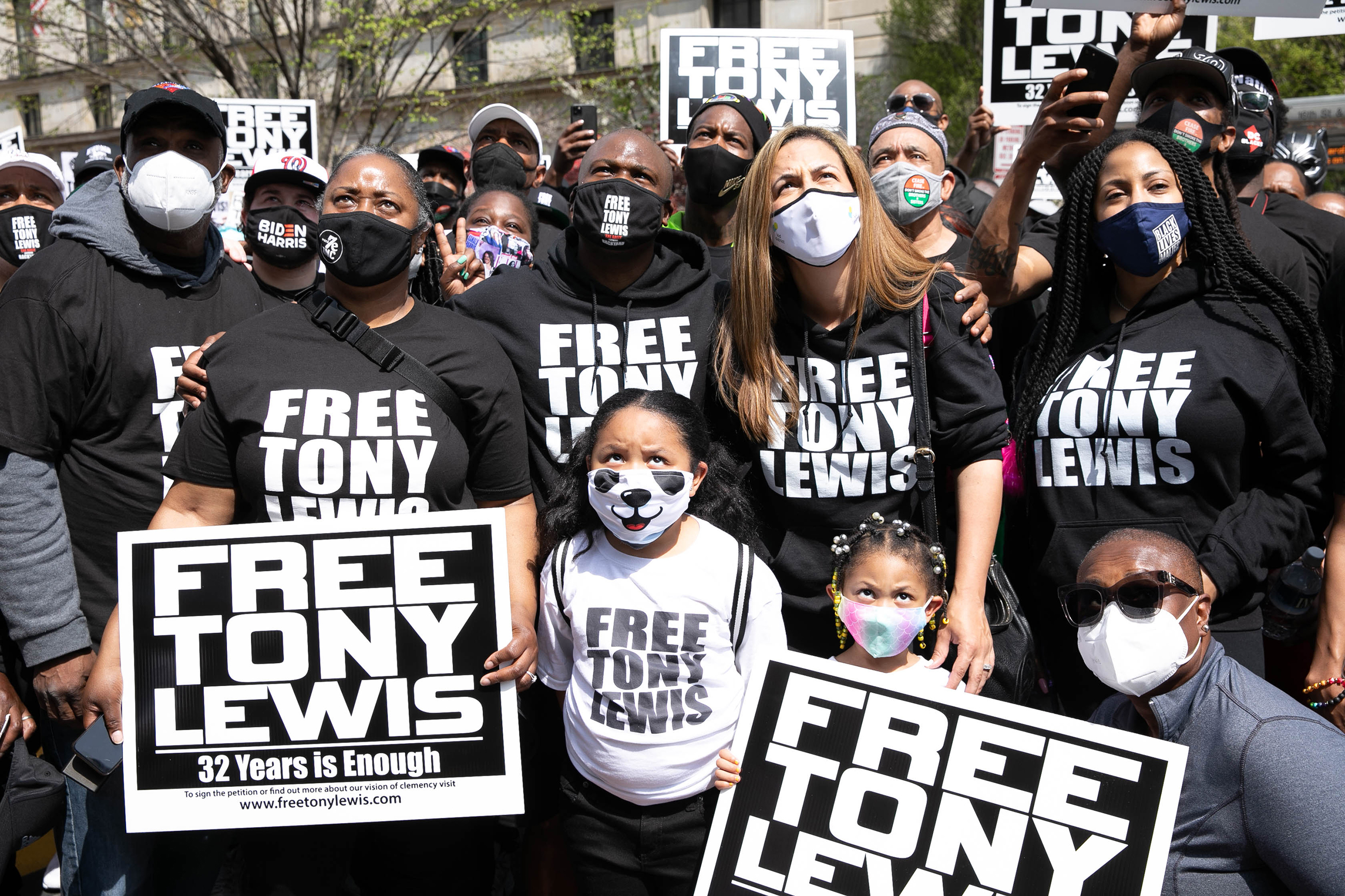
Through ingenuity and sheer persistence, Lewis Jr. had by the fall of 2021 turned his “Free Tony Lewis” campaign into a bona fide movement. He’d obtained the backing of local politicians, the support of celebrity rappers, and the legal assistance of a nationally known lawyer who’d secured White House clemency for seven other clients. “I had had every conversation, met every person, shook every hand,” he says. So when a federal judge denied his father’s appeal that November, Lewis Jr. saw the ruling not just as a legal rebuke but as a rejection of his life’s work. “[My father] helped me become the man that I am,” he says. “That has to mean something.”
Sharing the bad news over the phone, Lewis Jr. could hear the air leaving his father’s body. For a moment, neither spoke. But eventually, they resolved not to give up—pressing on with a legal effort that would test the limits of forgiveness during a time of criminal-justice reform while revealing the enduring power of a son’s love.
As their call came to a close, the elder Lewis asked a question: “You all right, son?”
“Dad,” Lewis Jr. replied, “if you are all right, I’m all right.”
In the early morning hours of May 28, 1980, Lewis Sr. was pacing outside a delivery room at George Washington University Hospital. He was 17 years old, buzzing with anticipation—and tired from a long night of dealing drugs. As the wait dragged on with no word from the doctor, he settled into a chair and drifted off to sleep.
For Lewis Sr., the birth of his first child was especially meaningful. Growing up on Hanover Place, a dilapidated strip about two and a half miles east of the hospital, he had never been sure about his own father’s identity. Several men were rumored, but none took him to ballgames or helped his mother pay the bills.
Lewis Sr. grew desperate to lift his family out of poverty. With no father figure to guide him, he saw the drug trade as his chance.
Without that support, Lewis Sr. says, he experienced a childhood of routine deprivation. Once the monthly welfare check ran out, the apartment fell dark and the radiators went cold. The rats in the kitchen were so noisy it was difficult to sleep, and he arrived at school with holes in his shoes. Sometimes, when there was no money for groceries, he would exchange an IOU note at the corner store for a can of beans or a few pieces of frozen chicken. For a family of six children, it wasn’t enough. “I never really could say that I went to bed full,” Lewis Sr. says.
In place of decent jobs and adequate education, the neighborhood developed a thriving criminal economy. Right outside Lewis Sr.’s front door, thieves regularly assembled to hawk stolen merchandise: fur coats, big-screen TVs, china sets, refrigerators, diamond rings. Some homes doubled as underground gambling parlors. Crowds of addicts gathered to buy drugs. As a teen, Lewis Sr. grew desperate to lift his family out of poverty. With no father figure to guide him, he saw the drug trade as his chance.
He got his start as a backup. When the regular dealers headed off to social events or left to escape winter weather, they’d enlist Lewis Sr. to sell tiny bags of marijuana. In return, he’d receive a modest cut of the proceeds. He had been at it only a short while when his girlfriend, who’d grown up just on the other side of Hanover Place, learned she was pregnant. Lewis Sr. began to envision a life for his unborn son that was radically different from his own. “I wanted to get him off Hanover Place before the culture sucked him in,” he says. “As it did me.”
When the hospital staff woke him to share the good news, Lewis Sr. was elated to meet his newborn. He was also gripped by fear. The cash he made as a fill-in drug dealer allowed him to buy groceries for his mother and shoes for his younger siblings but wasn’t enough to build a better life for his child. How am I going to take care of my son? he thought. What am I gonna do?
Lewis Sr. dove deeper into dealing. “I would be out there in the late nights,” he says. “I would be out there in the holidays. I would be out there in the cold.” Cornell Jones, the head of the neighborhood’s drug trade, noticed him, and when a supply of marijuana was stolen from a nearby stash house, an irate Jones fired his entire staff and put Lewis Sr. in command. The promotion was lucrative: By his son’s second birthday, Lewis Sr. had earned more than $1 million, mostly through cocaine sales. He upgraded his lifestyle, buying designer clothes and luxury cars, and also extracted his family from the dangers of Hanover Place, buying a house for his mother in DC’s affluent Crestwood neighborhood and another for his girlfriend and son in the Maryland suburbs.
“I was like George Jefferson,” Lewis Sr. says. “ ‘Moving on up.’ ”
Lewis Jr. refers to a different sitcom when describing his childhood: Silver Spoons. On weekday mornings, his mother would dress him in a collared shirt and tie, walk him out of their Largo home, and drive him to his private elementary school. When class let out, his father often picked him up—occasionally in a limousine—to go sneaker-shopping at Mazza Gallerie in Friendship Heights, get a frozen treat from Swensen’s ice-cream parlor in Georgetown, or catch an NBA game at the Capital Centre in Landover, where Lewis Sr. had a reserved parking spot. “He was my son,” the elder Lewis says, “but he was my best friend, too.”
Father and son went on toy-buying sprees at the FAO Schwarz in New York. They traveled to Tampa to watch the Washington NFL team lose to the Oakland Raiders in the Super Bowl. No birthday gift was too expensive, no request was denied. Lewis Sr. built his son a child-size basketball court, bought him a personal computer, and got him a German-shepherd puppy named Rambo. “At that age,” the younger Lewis says of his father, “I feel like he’s Superman.”
Lewis Jr. also made frequent trips to Hanover Place, where his many cousins, aunts, and uncles still lived. In his 2015 memoir, Slugg: A Boy’s Life in the Age of Mass Incarceration, he writes that his father never handled drugs in his presence. But during visits to the old neighborhood—described as “the city’s busiest and most brazen cocaine market” by the Washington Post—he saw addicts lining up for their fixes and enforcers carrying baseball bats in case anyone tried anything stupid. “We were privileged, relative to the people around us,” the younger Lewis says.

That privilege wasn’t simply material. Lewis Jr. had two parents who were present, loving, and determined to see him succeed. His mother used flashcards to improve his vocabulary. Lewis Sr. encouraged him to read the newspaper at home. Both expected their son to make the most of the opportunities they’d never had.
Once, Dad bought a similar set of clothes—brown slacks, white dress shirt, yellow cardigan—for the two to wear to a prizefight in Las Vegas. When Lewis Jr. saw the outfit, he complained that he’d prefer to dress in a sweatsuit like his two cousins were wearing. His father sharply reprimanded him.
“You ain’t like everybody else, understand?” Lewis Sr. said. “You ain’t like everybody else.”
In October 1985, police arrested Cornell Jones and shut down the Hanover Place drug market. Lewis Sr. managed to avoid arrest and soon launched his own operation a few blocks away. He was then approached by an up-and-coming drug lord, Rayful Edmond III, who was looking for a partner.
Over the next four years, the two twentysomethings built DC’s most notorious narcotics empire. After securing a dependable supply of Colombian cocaine through an intermediary in Los Angeles’s Crips street gang, they began funneling hundreds of pounds of the drug into the city, eventually capturing as much as 80 percent of the area cocaine market. By the late 1980s, their organization was reportedly raking in profits in excess of $2 million a week, with dealers making up to 30 sales a minute. Its more than 150 employees earned weekly salaries and perks such as access to lawyers and death benefits.
Among their customers, Lewis Sr. says, was then-mayor Marion Barry, whose addiction struggles became public in 1990 when he was arrested in a sting operation at a downtown hotel. “Yeah, the mayor would stop by,” Lewis Sr. says, adding that Barry was careful to insulate himself from risk by remaining in his car while someone else purchased drugs.
Edmond and Lewis Sr. had contrasting styles and demeanors. The former was a flashy practical jokester with life-of-the-party charm and an inner-city folk-hero mystique: Lewis Jr. recalls watching Edmond win $10,000 in a neighborhood craps game, toss the cash skyward, and smile as onlookers jostled to collect the bills. By comparison, Lewis Sr. was serious, introverted, and reserved. He enjoyed the second homes and courtside seats that drug dealing made possible. But the most important thing he purchased, he says, was knowing that his son never went to bed hungry or endured the humiliation of bringing an IOU to a corner store. “It made me feel whole, man,” he says.
As Edmond and Lewis Sr.’s enterprise flourished, drugs were having a concussive impact on DC. Locals succumbed to addiction. Cocaine-related hospital emergencies spiked. Rival gangs battled over market share, pushing violence to record levels: From 1985 to 1988, annual homicides more than doubled, to 372, enshrining the city as America’s deadliest. Though Lewis Sr. was never charged with violent crimes, law enforcement would link enforcers affiliated with his and Edmond’s drug operation to a total of 30 murders.
“Spreading addiction in your community is bad enough,” says John P. Dominguez, a federal prosecutor involved in the Edmond–Lewis Sr. case. “But the legacy of the Rayful Edmond drug organization was one of more serious consequences because it left in its wake violence, death, and destruction.”
In the summer of 1986, University of Maryland basketball star Len Bias died of a cocaine overdose not far from his College Park campus. This brought a flood of media attention to the issue of drugs and ramped up pressure on federal lawmakers to take action.
Yet rather than address the endemic poverty and structural inequalities at the root of the drug problem in neighborhoods like Hanover Place, the Reagan administration and its bipartisan supporters in Congress expanded the drug war that had begun in the 1970s, which emphasized putting users and dealers behind bars for lengthy sentences. Mirrored by the states, this approach helped fuel a dramatic increase in the US prison population, which, according to an Associated Press analysis, rose from 240,593 in 1975 to 1.43 million in 2019. For roughly 20 percent of those prisoners, drug crimes were their most serious offense.
Over time, many would come to recognize elements of this approach as racially biased. For example, a 1986 federal law imposed mandatory five-year-minimum sentences on offenses involving five grams of crack, a cheaper type of cocaine more prevalent in poor communities. Meanwhile, similar crimes involving as much as 100 times more powder cocaine could result in the same sentences. According to Kara Gotsch, acting executive director of the Sentencing Project, a DC organization that advocates for criminal-justice reform, because Black people were disproportionately living in poor and heavily policed communities, they suffered excessive consequences from the sentencing disparity. “It has had racist outcomes,” Gotsch says, “because it disproportionately harmed communities of color.”
On April 15, 1989, an eight-year-old Lewis Jr. was watching TV at home in Maryland when he saw the day’s big news story: His father and Edmond had been arrested; they would soon be indicted, along with 27 others, on 39 charges related to their drug business. As the boy struggled to make sense of what he’d just seen, he later recalled, his mother began cutting up photographs of Lewis Sr. and Edmond—images that might constitute evidence of crimes.
The ensuing trial was a national sensation. Edmond and Lewis Sr. were held in the brig at the Marine base in Quantico and flown by helicopter each day to the federal courthouse in DC. Due to security concerns, the proceedings took place behind bulletproof glass—not even the judge knew the identities of the anonymous jury members. When one witness testified against Edmond, her mother’s home was firebombed. The Chicago Tribune declared that the courtroom was “beginning to resemble a scene straight out of Medellín, Colombia.”
Following three months of arguments, Edmond and Lewis Sr. were found guilty of conspiracy, interstate travel in aid of racketeering, and unlawful use of communications facilities. Edmond was convicted on two additional charges. Both were sentenced to life without parole. Not long after, Lewis Jr. went to visit his father at Quantico. Once he passed through a security checkpoint and reached the end of a long hallway, he found Lewis Sr. weeping alone in his cell. Without drug money, the younger Lewis would have to move out of his suburban home and relocate with his mother to his grandmother’s house on Hanover Place. And the elder Lewis wouldn’t be there to protect him.
“I need you to be strong,” the father told his son.
In the trial’s wake, Lewis Jr.’s mother started acting strangely. She would break down in tears, then suddenly explode in rage. She talked to herself, vacuumed the walls in the middle of the night, and expressed delusions of paranoia—at one point screaming, “They trying to kill us!” Lewis Jr. was so unnerved that he began barricading himself in his room. Eventually, his mother was diagnosed with mental illness and spent time in a psychiatric hospital.
With his dad in prison and his mom incapacitated, it was left to Lewis Jr.’s grandmother and other family members to raise him. In 1994, they helped him gain admission to Gonzaga College High School, an elite all-boys Catholic school a half mile from his house. He struggled to connect with the prep-school crowd: At the end of the school day, while his classmates headed off to swim meets and lacrosse practice, Lewis Jr. returned to the grim asphalt of Hanover Place.
At this point, Lewis Sr. had been transferred to a federal prison in Lompoc, California. Father and son spoke by phone nearly every day. They discussed the girls Lewis Jr. liked, his upcoming driving test, his challenges at school, and the latest developments with Washington’s NFL team. The calls became an unlikely source of stability for each. “I think that’s what bonded us,” Lewis Jr. says. “We were leaning on each other.”
Over and over, the elder Lewis urged his son to stay in school and keep out of prison. “This shit is not fit for a human being,” Lewis Sr. would say. “So you make sure that you are making the right decisions that are not going to bring you in here.”
Despite the warnings, Lewis Jr. was drifting down a perilous path. In elementary school, he and his friends played a game called “hitting off the top,” in which they randomly approached pedestrians and punched them in the face. By high school, he was hanging out with the First and O Crew, neighborhood toughs who carried guns and fought rivals. While he never used guns or sold drugs, his association with the group proved dangerous: One summer evening in 1998, while Lewis Jr. played craps near an abandoned school, a figure drove up and opened fire. Somehow, no one died. Less than a year later, it happened again—and this time, one of Lewis Jr.’s friends suffered a nonfatal gunshot wound.
Bloodshed was pervasive, Lewis Jr. says, reflecting the meaner street ethos of 1990s DC, which, thanks in part to the power vacuum left by the arrest of his father’s drug gang, saw murder numbers eclipse those of the previous decade. One friend, he recalls, was stabbed to death; another was murdered by a rival gunman. Once, while on his grandmother’s stoop, Lewis Jr. saw a man wearing black clothes and dark sunglasses walk up to a parked car, pull out a gun, and murder the driver. The man walked away as if nothing had happened. In his father’s era, Lewis Jr. says, drug gangs used violence to obtain money. “But when my generation comes along,” he says, “the main thing that you want to be known for is that you’ve got a lot of bodies—like, you’re violent.”
After graduating from Gonzaga in 1998, Lewis Jr. enrolled at Howard University, only to drop out after freshman orientation. Through a family friend, however, he secured a city-funded job mentoring at-risk youth—and, with his grandmother’s encouragement, also went back to college. At UDC, he studied mass incarceration and the War on Drugs, forces that had shaped his life. “I was awakened, from an intellectual standpoint,” he says.
One morning in March 2001, Lewis and several friends were gathered outside not far from Hanover Place, preparing to head out shopping at Mazza Gallerie. Suddenly, a team of plainclothes FBI agents appeared and began searching the area. Inside the car of one of his cousins, the agents found a backpack stuffed with $31,000 in cash. Though Lewis Jr. wasn’t arrested, he soon received a letter from the Department of Justice indicating that his friends had been under surveillance for possible drugrelated crimes. Lewis Jr.’s heart sank as he thought of his father. “That was the shit he was telling me to watch out for,” Lewis Jr. says, “and I’m letting him down.”
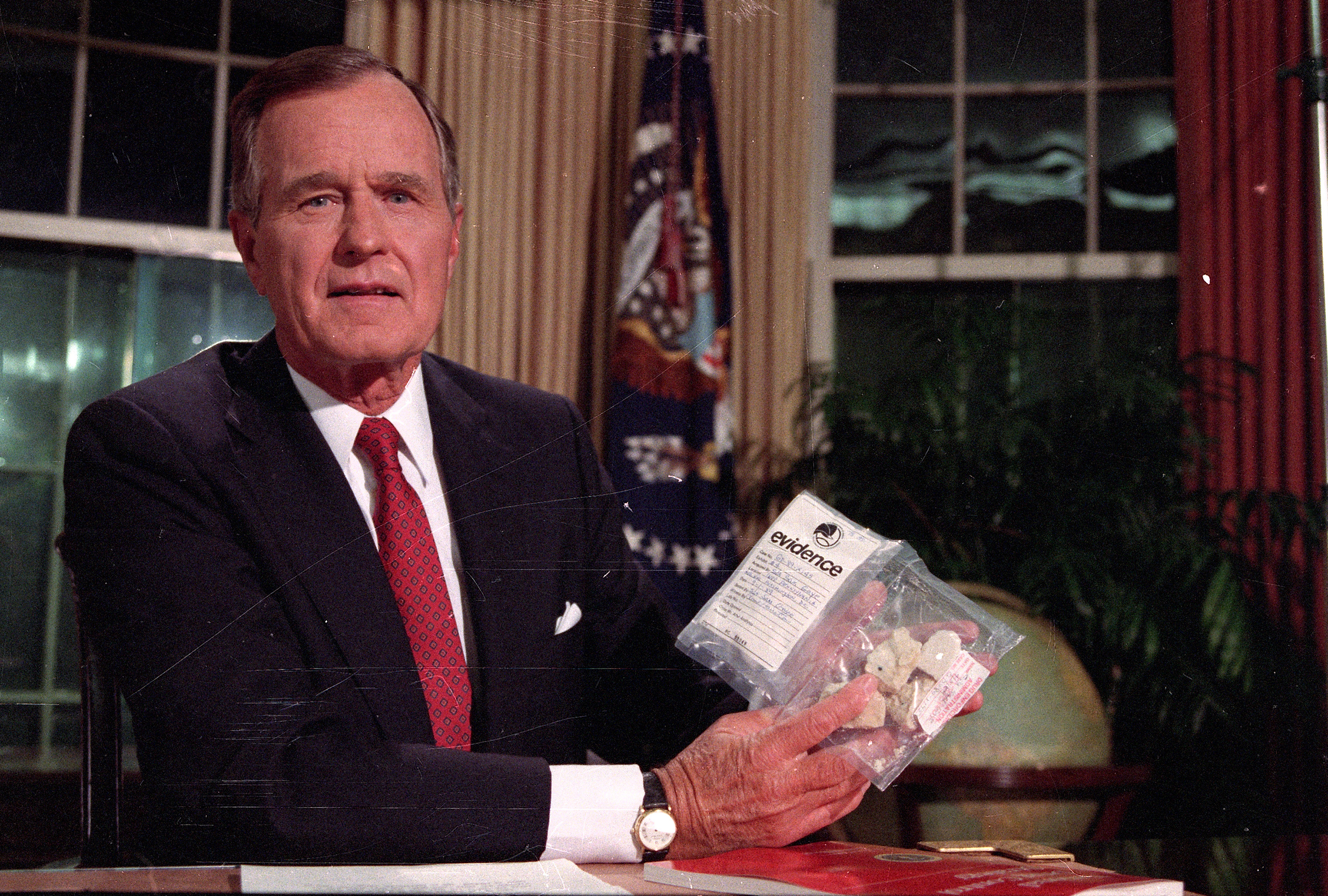
Realizing he could end up behind bars, too, Lewis Jr. distanced himself from his buddies on Hanover Place. He doubled down on work and school. For one of his UDC courses, he was assigned the book Dream City: Race, Power, and the Decline of Washington, D.C., which included a detailed account of Edmond and Lewis Sr.’s drug empire and even recounted a trip he’d taken with his father to Las Vegas. Though the book was accurate—it’s widely regarded as the seminal work on the topic—Lewis Jr. was troubled by the one-dimensional depiction of his father. “I always knew him in his fullness,” Lewis Jr. says, “and not just for being a drug dealer.”
Over the following two decades, Lewis Jr. published his memoir, which explored the social and economic forces that led to the crack epidemic and offered a deeply personal look at the human impact of mass incarceration. He mentored the children of incarcerated parents and became an influential advocate for prison reform. In his job helping former inmates reenter society, Lewis Jr. says, he would be “very transparent about what it was like to grow up without your parents, and it really put the mirror up to them. Like, [I would tell them,] ‘Do you know what you are doing to your kids when you leave your children?’ ”
Along the way, Lewis Jr.’s work would be featured by CNN and the Post and would earn him a Steve Harvey/Ford Motor Company Best Community Leader Award. But perhaps his most meaningful moment came in 2011 when he visited a corrections institution in Cumberland to talk about the resources available to inmates once they’re released. As Lewis Jr. addressed the crowd, one inmate in the first row began to break down in tears.
I can’t believe it, the elder Lewis thought.
For Lewis Sr., prison life had been bleak. Staying out of trouble with gangs and corrections officers was one thing, but with no hope of release, the biggest danger was despondency. Years of mundane isolation could break even the toughest inmates. Lewis Jr. had watched others with lengthy sentences collapse into mental illness or descend into drug addiction, and one of his brothers-in-law would later commit suicide behind bars.
“When you have that life without parole,” Lewis Sr. says, “you are [the] walking dead.”
With time to reflect, Lewis Sr. had grown profoundly remorseful for his years as a drug dealer—“young and dumb,” he says of himself—and the trauma he’d inflicted upon his community. “I should not have been the source of that poison,” he says. “Many times in prison, I asked [God] for forgiveness.” But now, seeing his son speak, Lewis Sr. felt pride—and hope for redemption.
“It was almost like I was free,” he says.
By 2010, state and federal policymakers had begun to revisit the harsh sentencing and mass incarceration that had characterized the drug war. A growing body of research was showing that putting drug offenders behind bars for lengthy mandatory sentences was failing to deter crime, instead swelling the prison population and exacting a disproportionate toll on Black Americans. Between 1980 and 2000, the Associated Press found, the Black incarceration rate in America had risen from 741 per 100,000 people to 1,808, as the rate for whites had climbed from 116 per 100,000 to 242. “It is communities of color that are being disproportionately policed,” Kara Gotsch of the Sentencing Project says. “And therefore [people of color] not only are more likely to be arrested, but they’re more likely to be prosecuted, more likely to be convicted, and more likely to be sentenced to prison.”
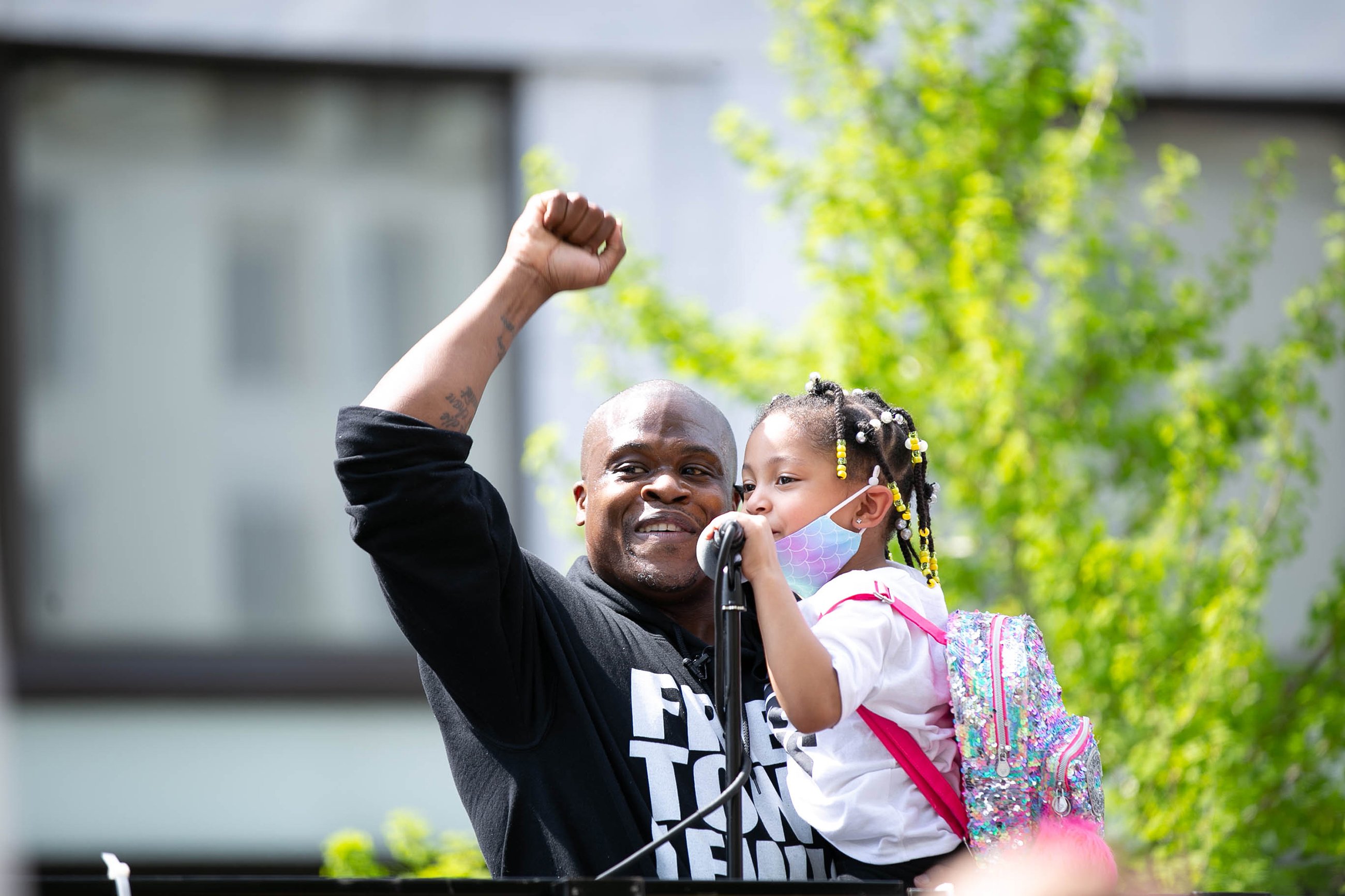
Lewis Sr. believed he deserved to go to prison for his crimes. So did his son. But they didn’t believe he deserved to die there. After decades of incarceration, both felt that the elder Lewis had settled his debt with society. Lewis Jr. had seen all manner of serious offenders—people convicted of murder, rape, child molestation—earn second chances. Yet his father remained locked up. “I know the kind of man my father is,” Lewis Jr. says. “How would he not be worthy of a second chance?”
“I should not have been the source of that poison,” Lewis Sr. says. “Many times in prison, I asked God for forgiveness.”
Lewis Sr. began helping lead a peer-to-peer mentoring network, Young Men Incorporated, that worked to reduce violence in the prison and prepare inmates for jobs upon their release. He assisted his son in organizing holiday-season toy drives to benefit the children of incarcerated parents. After being chosen by the DC mayor’s office, father and son appeared in a public-service video aimed at preventing young people from engaging in violence.
“I was trying to right some of those wrongs,” Lewis Sr. says.
Meanwhile, Lewis Jr. was publicly campaigning for his father’s release. He appeared in a 2008 BET documentary about his father’s onetime boss, Cornell Jones, wearing a T-shirt that read free tony lewis. Later, when the DC rapper Wale asked him to participate in one of his music videos, Lewis appeared on camera in the same shirt (though MTV blurred out the word “free”). Another rapper with local ties, Pusha T, referenced the elder Lewis in one of his songs. Through his Facebook and Twitter accounts, Lewis Jr. managed to turn #freetonylewis into a citywide movement. In April 2021, he staged a Free Tony Lewis rally with hundreds of supporters outside the White House.
Pusha T also introduced Lewis Jr. to Brittany K. Barnett, a lawyer who founded the Buried Alive Project, a Texas nonprofit focused on getting inmates serving lengthy sentences for drug offenses out of federal prisons. The two met at a DC law office in 2019. “He was just very passionate, and he was in a lot of pain,” Barnett says. “I could just see it in his eyes.”
After several months of work, Barnett filed her first appeal on Lewis Sr.’s behalf. In November 2021, she got the bad news that Lewis Jr. shared with his father over the phone: Denied. Absorbing the shock, Lewis Sr. worried about his son. “These things hurt, but I can handle it,” he says. “I’m always worried about what it’s going to do to him.” Lewis Jr., meanwhile, fretted that his advocacy campaign had offended the judge.
There was, however, another legal avenue to pursue. The 2018 First Step Act had retroactively reduced sentencing disparities for crack and powdered cocaine. Under new guidelines, Barnett argued, Lewis Sr. would be eligible for release after serving 34 years. And because he had already been imprisoned that long, the lawyer continued, Lewis Sr. should be freed right away.
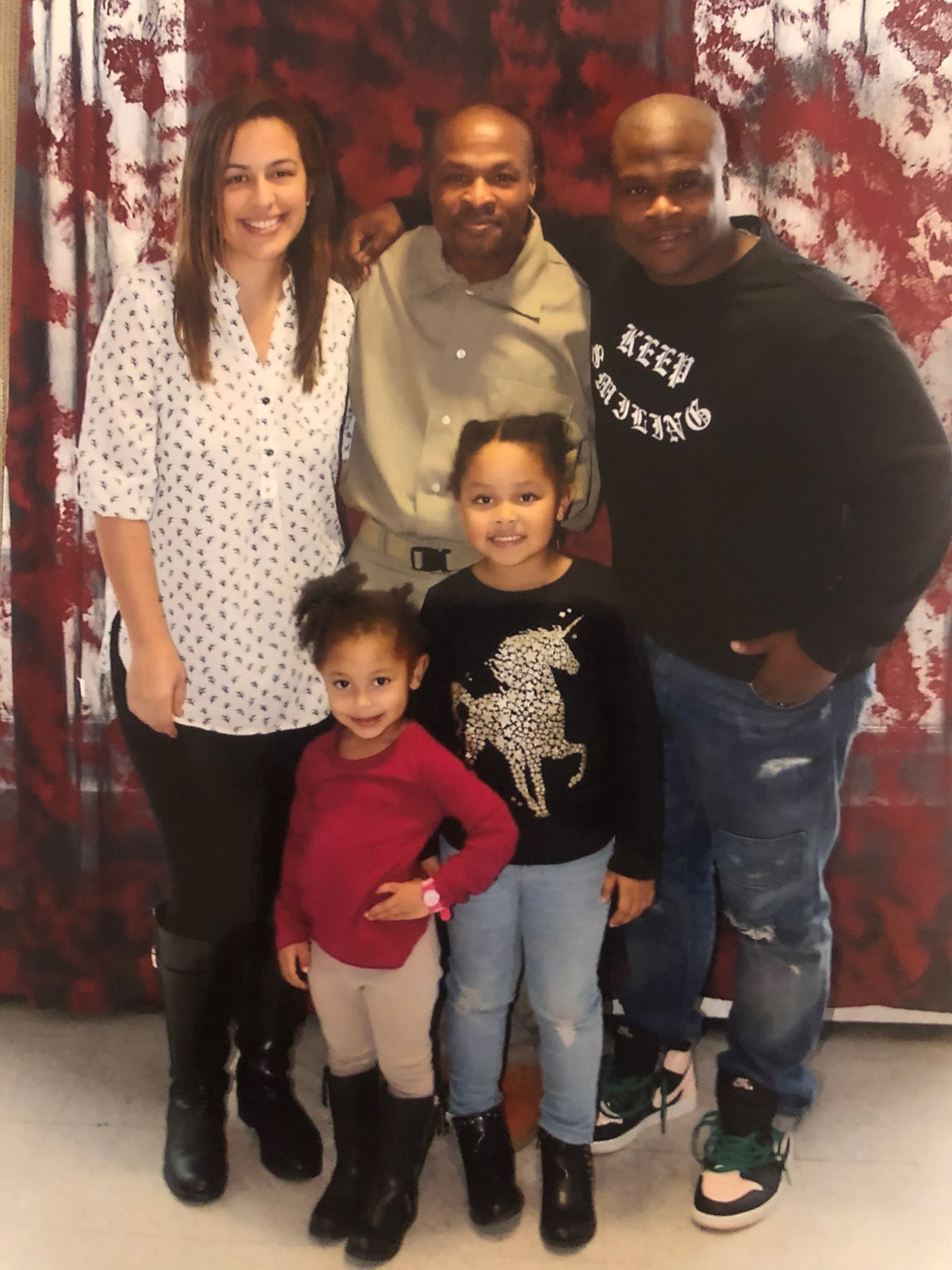
To support her case, she compiled page upon page of material showing how Lewis Sr. was far removed from being a 26-year-old drug dealer: his near-perfect behavior record; the more than 1,000 hours of coursework—in language arts, computer studies, and other fields—he’d completed; letters from three DC Council members supporting his release.
In a letter to the judge, Lewis Sr. focused on a different piece of evidence. “The man my son has become is my own evidence of my own process of transformation,” he wrote. “I know, if no one else does, that I could not have given my son the tools to become who he has become without first becoming what I wanted for him.”
Six weeks after filing the appeal, Barnett called Lewis Jr.—and this time, the news was good. Ecstatic, he tapped out the message he’d been waiting most of his life to write, sending it to his father through the federal prison’s email system.
“Be [there] to get you Monday Big Boy!!!!!!!”
In the nine months since his release, Lewis Sr. has slowly settled into his new life. He resides in the basement of what is now his son’s house on Hanover Place. He goes to work each morning for Blue Skye Construction, and he spends as much time as possible with his two granddaughters.
The old neighborhood has gentrified: Pricey condominiums have replaced vacant buildings, and young white couples push strollers down the street. But more broadly, the District continues to grapple with crime. Although homicides remain well below their 1990s peak, violent crime is on the rise and politicians are once again under pressure to act.
Lewis Jr. believes that the legacy of the drug war is still being felt and that policymakers’ failure to address poverty and structural inequality continues to drive people to crime—especially in Black communities. “DC got pretty,” he says. “DC got whiter. People assumed that automatically equaled safer. But for Black people from here, not too much ever changed. The same thing that sent Tony Lewis in the 1970s to the street as a 14-year-old boy is the same thing that has a 14-year-old boy carjacking today.”
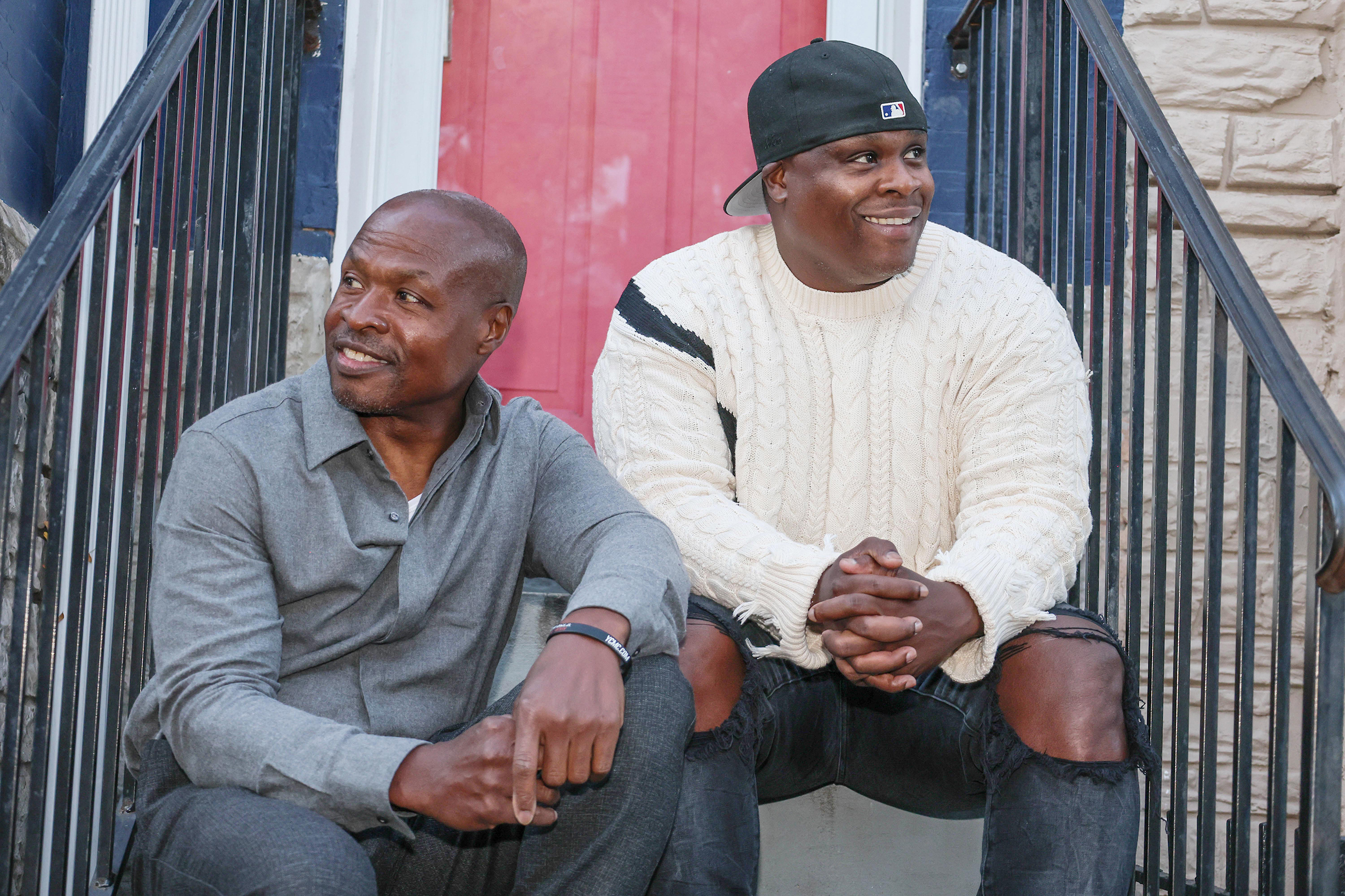
For his part, Lewis Sr. is working to quell the violence. He regularly speaks to community groups and local media about his own story, in the hopes that other young men will learn from his mistakes. “I try to give them the warning that I didn’t receive,” he says.
The man my son has become is my own evidence of my own process of transformation,” Lewis Sr. wrote to a federal judge.
For the past 13 years, Lewis Jr. has organized a Thanksgiving food drive for needy Washingtonians. This past year was no different—except for one thing. Rather than talk about the day’s events over the phone, father and son traveled together to the House of Lebanon, a senior-living facility near Hanover Place. They worked side by side, delivering bags filled with turkeys, corn-muffin mix, and canned string beans to elderly residents and receiving warm hugs in return.
“I’m just so proud of you,” Lewis Sr. told his son.
“We blessed, man,” the younger Lewis replied.
On a November day in 2021, Tony Lewis Sr. walked to a phone bank inside the federal correctional institution in Cumberland, Maryland, and placed a call to his son. Over the prior three decades, these conversations had become the highlight of his daily routine, an essential 15-minute escape from the austerity of prison. But on this day, his son’s voice was uncharacteristically somber.
“He denied the motion,” Tony Lewis Jr. said.
Thirty-two years earlier, Lewis Sr.—inmate No. 15443-083—had been convicted on nonviolent charges related to his leadership role in the signature drug empire of 1980s Washington, a notorious criminal enterprise that introduced crack cocaine to the region and fueled an explosion of gun violence. Sentenced to life without parole at age 26, he was separated from his beloved son, then nine years old, who was left alone to face the same obstacles of crime, poverty, and an absent father that had defined Lewis Sr.’s childhood.
“I couldn’t be there to be that Superman [anymore],” Lewis Sr. says now. “Matter of fact, I might need him to be my hero.”
As a teenager in the even more punishing streets of 1990s DC, the younger Lewis found himself dodging gunfire from rivals and becoming entangled with law enforcement. But through the influence of his father—admonishing his son from behind bars not to repeat his own mistakes—Lewis Jr. charted a different path. He worked to keep at-risk teens from engaging in violence, mentored the children of incarcerated parents, landed a job helping former inmates reenter society, and pressed policymakers to revisit the harsh mandatory minimum sentences of the War on Drugs. Eventually, he embarked on his most ambitious and personal effort: getting his father out of prison.

Through ingenuity and sheer persistence, Lewis Jr. had by the fall of 2021 turned his “Free Tony Lewis” campaign into a bona fide movement. He’d obtained the backing of local politicians, the support of celebrity rappers, and the legal assistance of a nationally known lawyer who’d secured White House clemency for seven other clients. “I had had every conversation, met every person, shook every hand,” he says. So when a federal judge denied his father’s appeal that November, Lewis Jr. saw the ruling not just as a legal rebuke but as a rejection of his life’s work. “[My father] helped me become the man that I am,” he says. “That has to mean something.”
Sharing the bad news over the phone, Lewis Jr. could hear the air leaving his father’s body. For a moment, neither spoke. But eventually, they resolved not to give up—pressing on with a legal effort that would test the limits of forgiveness during a time of criminal-justice reform while revealing the enduring power of a son’s love.
As their call came to a close, the elder Lewis asked a question: “You all right, son?”
“Dad,” Lewis Jr. replied, “if you are all right, I’m all right.”
In the early morning hours of May 28, 1980, Lewis Sr. was pacing outside a delivery room at George Washington University Hospital. He was 17 years old, buzzing with anticipation—and tired from a long night of dealing drugs. As the wait dragged on with no word from the doctor, he settled into a chair and drifted off to sleep.
For Lewis Sr., the birth of his first child was especially meaningful. Growing up on Hanover Place, a dilapidated strip about two and a half miles east of the hospital, he had never been sure about his own father’s identity. Several men were rumored, but none took him to ballgames or helped his mother pay the bills.
Lewis Sr. grew desperate to lift his family out of poverty. With no father figure to guide him, he saw the drug trade as his chance.
Without that support, Lewis Sr. says, he experienced a childhood of routine deprivation. Once the monthly welfare check ran out, the apartment fell dark and the radiators went cold. The rats in the kitchen were so noisy it was difficult to sleep, and he arrived at school with holes in his shoes. Sometimes, when there was no money for groceries, he would exchange an IOU note at the corner store for a can of beans or a few pieces of frozen chicken. For a family of six children, it wasn’t enough. “I never really could say that I went to bed full,” Lewis Sr. says.
In place of decent jobs and adequate education, the neighborhood developed a thriving criminal economy. Right outside Lewis Sr.’s front door, thieves regularly assembled to hawk stolen merchandise: fur coats, big-screen TVs, china sets, refrigerators, diamond rings. Some homes doubled as underground gambling parlors. Crowds of addicts gathered to buy drugs. As a teen, Lewis Sr. grew desperate to lift his family out of poverty. With no father figure to guide him, he saw the drug trade as his chance.
He got his start as a backup. When the regular dealers headed off to social events or left to escape winter weather, they’d enlist Lewis Sr. to sell tiny bags of marijuana. In return, he’d receive a modest cut of the proceeds. He had been at it only a short while when his girlfriend, who’d grown up just on the other side of Hanover Place, learned she was pregnant. Lewis Sr. began to envision a life for his unborn son that was radically different from his own. “I wanted to get him off Hanover Place before the culture sucked him in,” he says. “As it did me.”
When the hospital staff woke him to share the good news, Lewis Sr. was elated to meet his newborn. He was also gripped by fear. The cash he made as a fill-in drug dealer allowed him to buy groceries for his mother and shoes for his younger siblings but wasn’t enough to build a better life for his child. How am I going to take care of my son? he thought. What am I gonna do?
Lewis Sr. dove deeper into dealing. “I would be out there in the late nights,” he says. “I would be out there in the holidays. I would be out there in the cold.” Cornell Jones, the head of the neighborhood’s drug trade, noticed him, and when a supply of marijuana was stolen from a nearby stash house, an irate Jones fired his entire staff and put Lewis Sr. in command. The promotion was lucrative: By his son’s second birthday, Lewis Sr. had earned more than $1 million, mostly through cocaine sales. He upgraded his lifestyle, buying designer clothes and luxury cars, and also extracted his family from the dangers of Hanover Place, buying a house for his mother in DC’s affluent Crestwood neighborhood and another for his girlfriend and son in the Maryland suburbs.
“I was like George Jefferson,” Lewis Sr. says. “ ‘Moving on up.’ ”
Lewis Jr. refers to a different sitcom when describing his childhood: Silver Spoons. On weekday mornings, his mother would dress him in a collared shirt and tie, walk him out of their Largo home, and drive him to his private elementary school. When class let out, his father often picked him up—occasionally in a limousine—to go sneaker-shopping at Mazza Gallerie in Friendship Heights, get a frozen treat from Swensen’s ice-cream parlor in Georgetown, or catch an NBA game at the Capital Centre in Landover, where Lewis Sr. had a reserved parking spot. “He was my son,” the elder Lewis says, “but he was my best friend, too.”
Father and son went on toy-buying sprees at the FAO Schwarz in New York. They traveled to Tampa to watch the Washington NFL team lose to the Oakland Raiders in the Super Bowl. No birthday gift was too expensive, no request was denied. Lewis Sr. built his son a child-size basketball court, bought him a personal computer, and got him a German-shepherd puppy named Rambo. “At that age,” the younger Lewis says of his father, “I feel like he’s Superman.”
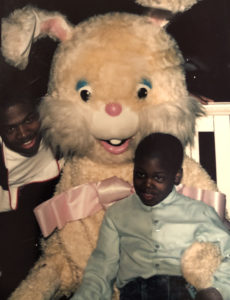
Lewis Jr. also made frequent trips to Hanover Place, where his many cousins, aunts, and uncles still lived. In his 2015 memoir, Slugg: A Boy’s Life in the Age of Mass Incarceration, he writes that his father never handled drugs in his presence. But during visits to the old neighborhood—described as “the city’s busiest and most brazen cocaine market” by the Washington Post—he saw addicts lining up for their fixes and enforcers carrying baseball bats in case anyone tried anything stupid. “We were privileged, relative to the people around us,” the younger Lewis says.
That privilege wasn’t simply material. Lewis Jr. had two parents who were present, loving, and determined to see him succeed. His mother used flashcards to improve his vocabulary. Lewis Sr. encouraged him to read the newspaper at home. Both expected their son to make the most of the opportunities they’d never had.
Once, Dad bought a similar set of clothes—brown slacks, white dress shirt, yellow cardigan—for the two to wear to a prizefight in Las Vegas. When Lewis Jr. saw the outfit, he complained that he’d prefer to dress in a sweatsuit like his two cousins were wearing. His father sharply reprimanded him.
“You ain’t like everybody else, understand?” Lewis Sr. said. “You ain’t like everybody else.”
In October 1985, police arrested Cornell Jones and shut down the Hanover Place drug market. Lewis Sr. managed to avoid arrest and soon launched his own operation a few blocks away. He was then approached by an up-and-coming drug lord, Rayful Edmond III, who was looking for a partner.
Over the next four years, the two twentysomethings built DC’s most notorious narcotics empire. After securing a dependable supply of Colombian cocaine through an intermediary in Los Angeles’s Crips street gang, they began funneling hundreds of pounds of the drug into the city, eventually capturing as much as 80 percent of the area cocaine market. By the late 1980s, their organization was reportedly raking in profits in excess of $2 million a week, with dealers making up to 30 sales a minute. Its more than 150 employees earned weekly salaries and perks such as access to lawyers and death benefits.
Among their customers, Lewis Sr. says, was then-mayor Marion Barry, whose addiction struggles became public in 1990 when he was arrested in a sting operation at a downtown hotel. “Yeah, the mayor would stop by,” Lewis Sr. says, adding that Barry was careful to insulate himself from risk by remaining in his car while someone else purchased drugs.
Edmond and Lewis Sr. had contrasting styles and demeanors. The former was a flashy practical jokester with life-of-the-party charm and an inner-city folk-hero mystique: Lewis Jr. recalls watching Edmond win $10,000 in a neighborhood craps game, toss the cash skyward, and smile as onlookers jostled to collect the bills. By comparison, Lewis Sr. was serious, introverted, and reserved. He enjoyed the second homes and courtside seats that drug dealing made possible. But the most important thing he purchased, he says, was knowing that his son never went to bed hungry or endured the humiliation of bringing an IOU to a corner store. “It made me feel whole, man,” he says.
As Edmond and Lewis Sr.’s enterprise flourished, drugs were having a concussive impact on DC. Locals succumbed to addiction. Cocaine-related hospital emergencies spiked. Rival gangs battled over market share, pushing violence to record levels: From 1985 to 1988, annual homicides more than doubled, to 372, enshrining the city as America’s deadliest. Though Lewis Sr. was never charged with violent crimes, law enforcement would link enforcers affiliated with his and Edmond’s drug operation to a total of 30 murders.
“Spreading addiction in your community is bad enough,” says John P. Dominguez, a federal prosecutor involved in the Edmond–Lewis Sr. case. “But the legacy of the Rayful Edmond drug organization was one of more serious consequences because it left in its wake violence, death, and destruction.”
In the summer of 1986, University of Maryland basketball star Len Bias died of a cocaine overdose not far from his College Park campus. This brought a flood of media attention to the issue of drugs and ramped up pressure on federal lawmakers to take action.
Yet rather than address the endemic poverty and structural inequalities at the root of the drug problem in neighborhoods like Hanover Place, the Reagan administration and its bipartisan supporters in Congress expanded the drug war that had begun in the 1970s, which emphasized putting users and dealers behind bars for lengthy sentences. Mirrored by the states, this approach helped fuel a dramatic increase in the US prison population, which, according to an Associated Press analysis, rose from 240,593 in 1975 to 1.43 million in 2019. For roughly 20 percent of those prisoners, drug crimes were their most serious offense.
Over time, many would come to recognize elements of this approach as racially biased. For example, a 1986 federal law imposed mandatory five-year-minimum sentences on offenses involving five grams of crack, a cheaper type of cocaine more prevalent in poor communities. Meanwhile, similar crimes involving as much as 100 times more powder cocaine could result in the same sentences. According to Kara Gotsch, acting executive director of the Sentencing Project, a DC organization that advocates for criminal-justice reform, because Black people were disproportionately living in poor and heavily policed communities, they suffered excessive consequences from the sentencing disparity. “It has had racist outcomes,” Gotsch says, “because it disproportionately harmed communities of color.”
On April 15, 1989, an eight-year-old Lewis Jr. was watching TV at home in Maryland when he saw the day’s big news story: His father and Edmond had been arrested; they would soon be indicted, along with 27 others, on 39 charges related to their drug business. As the boy struggled to make sense of what he’d just seen, he later recalled, his mother began cutting up photographs of Lewis Sr. and Edmond—images that might constitute evidence of crimes.
The ensuing trial was a national sensation. Edmond and Lewis Sr. were held in the brig at the Marine base in Quantico and flown by helicopter each day to the federal courthouse in DC. Due to security concerns, the proceedings took place behind bulletproof glass—not even the judge knew the identities of the anonymous jury members. When one witness testified against Edmond, her mother’s home was firebombed. The Chicago Tribune declared that the courtroom was “beginning to resemble a scene straight out of Medellín, Colombia.”
Following three months of arguments, Edmond and Lewis Sr. were found guilty of conspiracy, interstate travel in aid of racketeering, and unlawful use of communications facilities. Edmond was convicted on two additional charges. Both were sentenced to life without parole. Not long after, Lewis Jr. went to visit his father at Quantico. Once he passed through a security checkpoint and reached the end of a long hallway, he found Lewis Sr. weeping alone in his cell. Without drug money, the younger Lewis would have to move out of his suburban home and relocate with his mother to his grandmother’s house on Hanover Place. And the elder Lewis wouldn’t be there to protect him.
“I need you to be strong,” the father told his son.
In the trial’s wake, Lewis Jr.’s mother started acting strangely. She would break down in tears, then suddenly explode in rage. She talked to herself, vacuumed the walls in the middle of the night, and expressed delusions of paranoia—at one point screaming, “They trying to kill us!” Lewis Jr. was so unnerved that he began barricading himself in his room. Eventually, his mother was diagnosed with mental illness and spent time in a psychiatric hospital.
With his dad in prison and his mom incapacitated, it was left to Lewis Jr.’s grandmother and other family members to raise him. In 1994, they helped him gain admission to Gonzaga College High School, an elite all-boys Catholic school a half mile from his house. He struggled to connect with the prep-school crowd: At the end of the school day, while his classmates headed off to swim meets and lacrosse practice, Lewis Jr. returned to the grim asphalt of Hanover Place.
At this point, Lewis Sr. had been transferred to a federal prison in Lompoc, California. Father and son spoke by phone nearly every day. They discussed the girls Lewis Jr. liked, his upcoming driving test, his challenges at school, and the latest developments with Washington’s NFL team. The calls became an unlikely source of stability for each. “I think that’s what bonded us,” Lewis Jr. says. “We were leaning on each other.”
Over and over, the elder Lewis urged his son to stay in school and keep out of prison. “This shit is not fit for a human being,” Lewis Sr. would say. “So you make sure that you are making the right decisions that are not going to bring you in here.”
Despite the warnings, Lewis Jr. was drifting down a perilous path. In elementary school, he and his friends played a game called “hitting off the top,” in which they randomly approached pedestrians and punched them in the face. By high school, he was hanging out with the First and O Crew, neighborhood toughs who carried guns and fought rivals. While he never used guns or sold drugs, his association with the group proved dangerous: One summer evening in 1998, while Lewis Jr. played craps near an abandoned school, a figure drove up and opened fire. Somehow, no one died. Less than a year later, it happened again—and this time, one of Lewis Jr.’s friends suffered a nonfatal gunshot wound.
Bloodshed was pervasive, Lewis Jr. says, reflecting the meaner street ethos of 1990s DC, which, thanks in part to the power vacuum left by the arrest of his father’s drug gang, saw murder numbers eclipse those of the previous decade. One friend, he recalls, was stabbed to death; another was murdered by a rival gunman. Once, while on his grandmother’s stoop, Lewis Jr. saw a man wearing black clothes and dark sunglasses walk up to a parked car, pull out a gun, and murder the driver. The man walked away as if nothing had happened. In his father’s era, Lewis Jr. says, drug gangs used violence to obtain money. “But when my generation comes along,” he says, “the main thing that you want to be known for is that you’ve got a lot of bodies—like, you’re violent.”
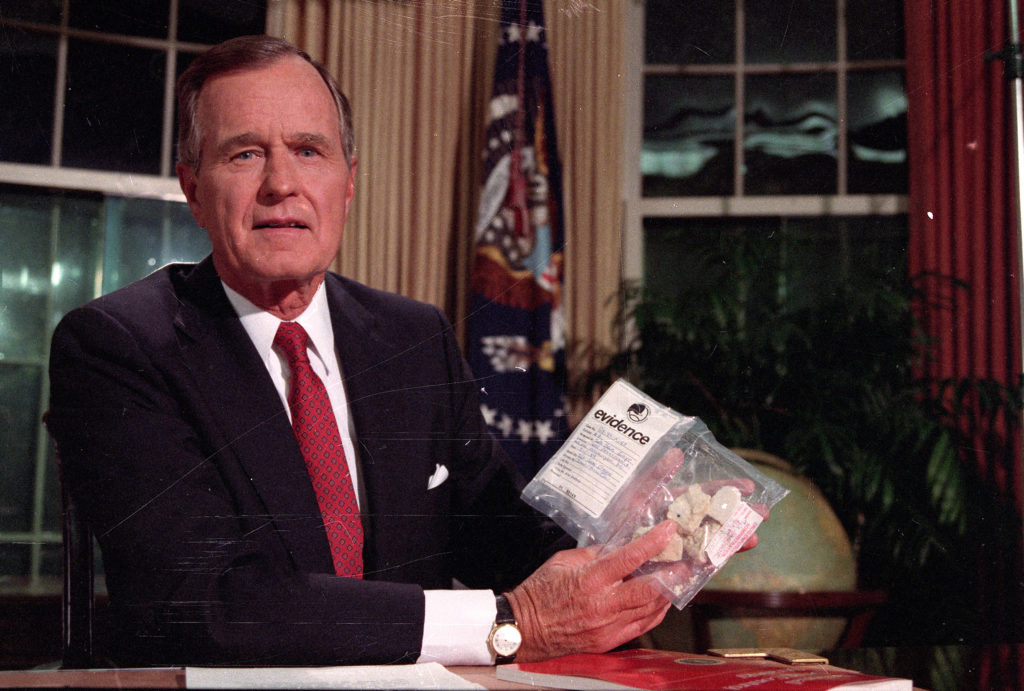
After graduating from Gonzaga in 1998, Lewis Jr. enrolled at Howard University, only to drop out after freshman orientation. Through a family friend, however, he secured a city-funded job mentoring at-risk youth—and, with his grandmother’s encouragement, also went back to college. At UDC, he studied mass incarceration and the War on Drugs, forces that had shaped his life. “I was awakened, from an intellectual standpoint,” he says.
One morning in March 2001, Lewis and several friends were gathered outside not far from Hanover Place, preparing to head out shopping at Mazza Gallerie. Suddenly, a team of plainclothes FBI agents appeared and began searching the area. Inside the car of one of his cousins, the agents found a backpack stuffed with $31,000 in cash. Though Lewis Jr. wasn’t arrested, he soon received a letter from the Department of Justice indicating that his friends had been under surveillance for possible drugrelated crimes. Lewis Jr.’s heart sank as he thought of his father. “That was the shit he was telling me to watch out for,” Lewis Jr. says, “and I’m letting him down.”
Realizing he could end up behind bars, too, Lewis Jr. distanced himself from his buddies on Hanover Place. He doubled down on work and school. For one of his UDC courses, he was assigned the book Dream City: Race, Power, and the Decline of Washington, D.C., which included a detailed account of Edmond and Lewis Sr.’s drug empire and even recounted a trip he’d taken with his father to Las Vegas. Though the book was accurate—it’s widely regarded as the seminal work on the topic—Lewis Jr. was troubled by the one-dimensional depiction of his father. “I always knew him in his fullness,” Lewis Jr. says, “and not just for being a drug dealer.”
Over the following two decades, Lewis Jr. published his memoir, which explored the social and economic forces that led to the crack epidemic and offered a deeply personal look at the human impact of mass incarceration. He mentored the children of incarcerated parents and became an influential advocate for prison reform. In his job helping former inmates reenter society, Lewis Jr. says, he would be “very transparent about what it was like to grow up without your parents, and it really put the mirror up to them. Like, [I would tell them,] ‘Do you know what you are doing to your kids when you leave your children?’ ”
Along the way, Lewis Jr.’s work would be featured by CNN and the Post and would earn him a Steve Harvey/Ford Motor Company Best Community Leader Award. But perhaps his most meaningful moment came in 2011 when he visited a corrections institution in Cumberland to talk about the resources available to inmates once they’re released. As Lewis Jr. addressed the crowd, one inmate in the first row began to break down in tears.
I can’t believe it, the elder Lewis thought.
For Lewis Sr., prison life had been bleak. Staying out of trouble with gangs and corrections officers was one thing, but with no hope of release, the biggest danger was despondency. Years of mundane isolation could break even the toughest inmates. Lewis Jr. had watched others with lengthy sentences collapse into mental illness or descend into drug addiction, and one of his brothers-in-law would later commit suicide behind bars.
“When you have that life without parole,” Lewis Sr. says, “you are [the] walking dead.”
With time to reflect, Lewis Sr. had grown profoundly remorseful for his years as a drug dealer—“young and dumb,” he says of himself—and the trauma he’d inflicted upon his community. “I should not have been the source of that poison,” he says. “Many times in prison, I asked [God] for forgiveness.” But now, seeing his son speak, Lewis Sr. felt pride—and hope for redemption.
“It was almost like I was free,” he says.
By 2010, state and federal policymakers had begun to revisit the harsh sentencing and mass incarceration that had characterized the drug war. A growing body of research was showing that putting drug offenders behind bars for lengthy mandatory sentences was failing to deter crime, instead swelling the prison population and exacting a disproportionate toll on Black Americans. Between 1980 and 2000, the Associated Press found, the Black incarceration rate in America had risen from 741 per 100,000 people to 1,808, as the rate for whites had climbed from 116 per 100,000 to 242. “It is communities of color that are being disproportionately policed,” Kara Gotsch of the Sentencing Project says. “And therefore [people of color] not only are more likely to be arrested, but they’re more likely to be prosecuted, more likely to be convicted, and more likely to be sentenced to prison.”

Lewis Sr. believed he deserved to go to prison for his crimes. So did his son. But they didn’t believe he deserved to die there. After decades of incarceration, both felt that the elder Lewis had settled his debt with society. Lewis Jr. had seen all manner of serious offenders—people convicted of murder, rape, child molestation—earn second chances. Yet his father remained locked up. “I know the kind of man my father is,” Lewis Jr. says. “How would he not be worthy of a second chance?”
“I should not have been the source of that poison,” Lewis Sr. says. “Many times in prison, I asked God for forgiveness.”
Lewis Sr. began helping lead a peer-to-peer mentoring network, Young Men Incorporated, that worked to reduce violence in the prison and prepare inmates for jobs upon their release. He assisted his son in organizing holiday-season toy drives to benefit the children of incarcerated parents. After being chosen by the DC mayor’s office, father and son appeared in a public-service video aimed at preventing young people from engaging in violence.
“I was trying to right some of those wrongs,” Lewis Sr. says.
Meanwhile, Lewis Jr. was publicly campaigning for his father’s release. He appeared in a 2008 BET documentary about his father’s onetime boss, Cornell Jones, wearing a T-shirt that read free tony lewis. Later, when the DC rapper Wale asked him to participate in one of his music videos, Lewis appeared on camera in the same shirt (though MTV blurred out the word “free”). Another rapper with local ties, Pusha T, referenced the elder Lewis in one of his songs. Through his Facebook and Twitter accounts, Lewis Jr. managed to turn #freetonylewis into a citywide movement. In April 2021, he staged a Free Tony Lewis rally with hundreds of supporters outside the White House.
Pusha T also introduced Lewis Jr. to Brittany K. Barnett, a lawyer who founded the Buried Alive Project, a Texas nonprofit focused on getting inmates serving lengthy sentences for drug offenses out of federal prisons. The two met at a DC law office in 2019. “He was just very passionate, and he was in a lot of pain,” Barnett says. “I could just see it in his eyes.”
After several months of work, Barnett filed her first appeal on Lewis Sr.’s behalf. In November 2021, she got the bad news that Lewis Jr. shared with his father over the phone: Denied. Absorbing the shock, Lewis Sr. worried about his son. “These things hurt, but I can handle it,” he says. “I’m always worried about what it’s going to do to him.” Lewis Jr., meanwhile, fretted that his advocacy campaign had offended the judge.
There was, however, another legal avenue to pursue. The 2018 First Step Act had retroactively reduced sentencing disparities for crack and powdered cocaine. Under new guidelines, Barnett argued, Lewis Sr. would be eligible for release after serving 34 years. And because he had already been imprisoned that long, the lawyer continued, Lewis Sr. should be freed right away.
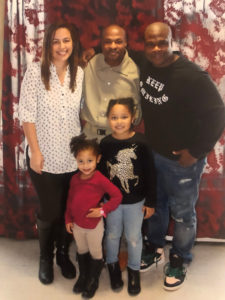
To support her case, she compiled page upon page of material showing how Lewis Sr. was far removed from being a 26-year-old drug dealer: his near-perfect behavior record; the more than 1,000 hours of coursework—in language arts, computer studies, and other fields—he’d completed; letters from three DC Council members supporting his release.
In a letter to the judge, Lewis Sr. focused on a different piece of evidence. “The man my son has become is my own evidence of my own process of transformation,” he wrote. “I know, if no one else does, that I could not have given my son the tools to become who he has become without first becoming what I wanted for him.”
Six weeks after filing the appeal, Barnett called Lewis Jr.—and this time, the news was good. Ecstatic, he tapped out the message he’d been waiting most of his life to write, sending it to his father through the federal prison’s email system.
“Be [there] to get you Monday Big Boy!!!!!!!”
In the nine months since his release, Lewis Sr. has slowly settled into his new life. He resides in the basement of what is now his son’s house on Hanover Place. He goes to work each morning for Blue Skye Construction, and he spends as much time as possible with his two granddaughters.
The old neighborhood has gentrified: Pricey condominiums have replaced vacant buildings, and young white couples push strollers down the street. But more broadly, the District continues to grapple with crime. Although homicides remain well below their 1990s peak, violent crime is on the rise and politicians are once again under pressure to act.
Lewis Jr. believes that the legacy of the drug war is still being felt and that policymakers’ failure to address poverty and structural inequality continues to drive people to crime—especially in Black communities. “DC got pretty,” he says. “DC got whiter. People assumed that automatically equaled safer. But for Black people from here, not too much ever changed. The same thing that sent Tony Lewis in the 1970s to the street as a 14-year-old boy is the same thing that has a 14-year-old boy carjacking today.”

For his part, Lewis Sr. is working to quell the violence. He regularly speaks to community groups and local media about his own story, in the hopes that other young men will learn from his mistakes. “I try to give them the warning that I didn’t receive,” he says.
The man my son has become is my own evidence of my own process of transformation,” Lewis Sr. wrote to a federal judge.
For the past 13 years, Lewis Jr. has organized a Thanksgiving food drive for needy Washingtonians. This past year was no different—except for one thing. Rather than talk about the day’s events over the phone, father and son traveled together to the House of Lebanon, a senior-living facility near Hanover Place. They worked side by side, delivering bags filled with turkeys, corn-muffin mix, and canned string beans to elderly residents and receiving warm hugs in return.
“I’m just so proud of you,” Lewis Sr. told his son.
“We blessed, man,” the younger Lewis replied.
This article appears in the January 2024 issue of Washingtonian.
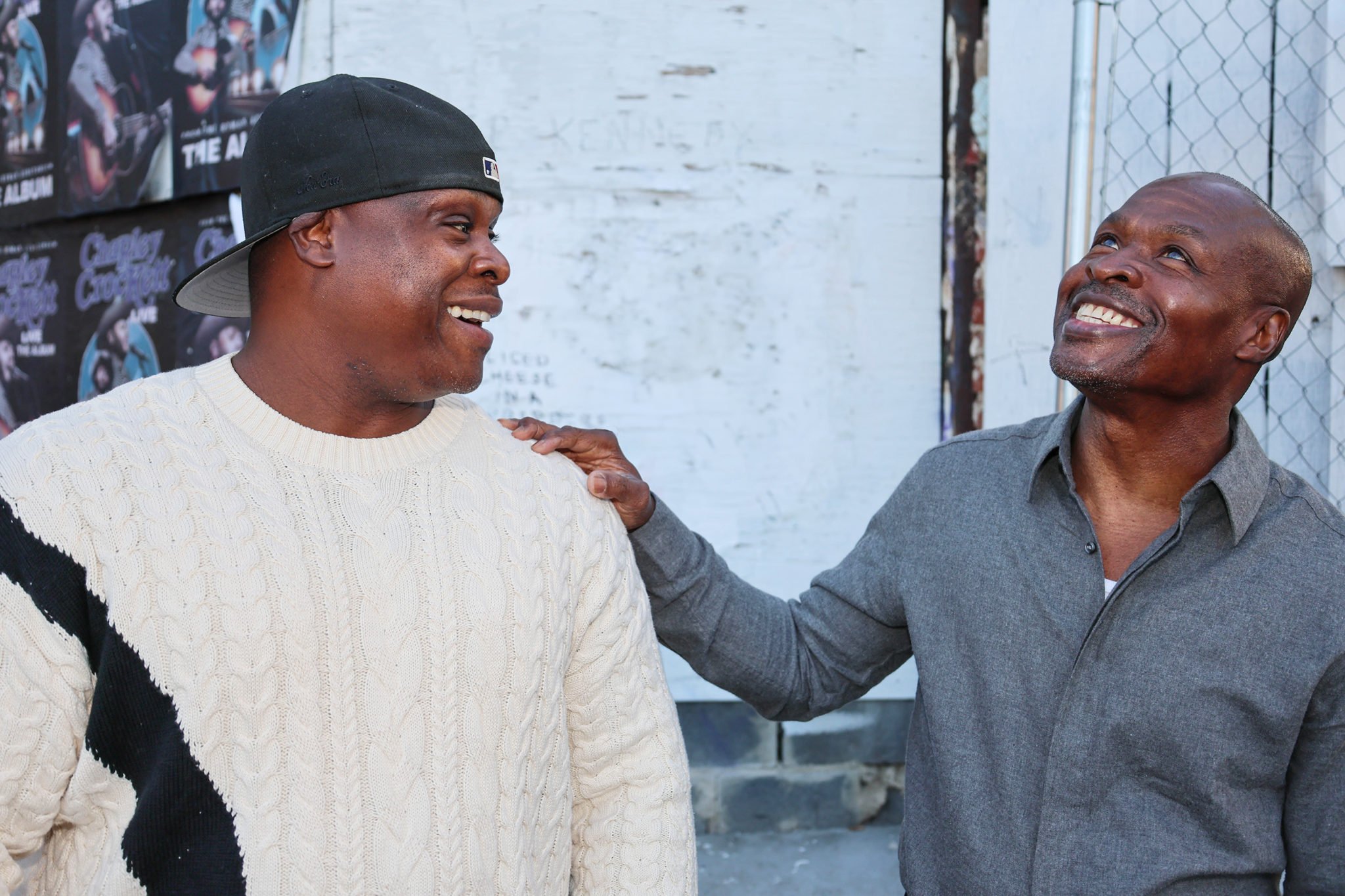
![Luke 008[2]-1 - Washingtonian](https://www.washingtonian.com/wp-content/uploads/2017/10/Luke-0082-1-e1509126354184.jpg)
